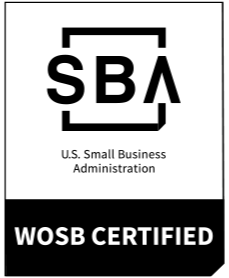Building a Healthy Organizational Culture: A Leader’s Role in Preventing Crises
As leaders, we often focus too intently on performance metrics, efficiency, and organizational goals. Yet, none of those initiatives can fully succeed without first focusing on organizational culture. Today, and during Suicide Prevention Awareness Month, the discussion of a leader’s role in cultivating a healthy organizational culture is more crucial than ever.
According to the Centers for Disease Control and Prevention, approximately 49,000 people die by suicide each year in the United States, and its impacts reverberate well beyond the date. Workplace burnout is one of the leading causes of emotional distress, and the World Health Organization reports that depression and anxiety cost the global economy approximately $1 trillion annually in lost productivity. As leaders, we must recognize this is not a productivity or money issue—it’s a core human issue. We must accept our responsibility to create cultures of support and recognition that safeguard the well-being of those who entrust us with significant parts of their lives.
Each of you reading this likely has a story. You had someone in your life that you lost too soon, whose departure marked their loved ones. You know the impact all too well. By focusing on our teams’ mental and physical health, we may have the opportunity to prevent the same from happening to their loved ones.
In this blog, we’ll explore three key strategies leaders can use to detect potential issues early and intervene before they become crises. We’ll also share how to build three foundational components of a healthy organizational culture that fosters well-being and resilience.
—
Cultivate Open Channels of Communication
Effective leaders are engaged leaders. Communicate routinely—not just when your employees need you. Regular and well-structured one-on-one meetings create an opportunity to build real relationships with your employees, allowing you to develop a trusted presence in their lives and understand each person’s warning signs. Seemingly small signals are just as important. How often do you talk about how busy you are? How do you respond when your employee shares something personal? How do you respond when an employee asks for help? These signals demonstrate to your team members whether they can rely on you in times of need.
Carefully consider how you want to build transparency and, if appropriate, approachability through your communication channels. Your employees need an environment where they can feel safe discussing personal challenges without fear of judgment or career repercussions. Whether you model vulnerability by sharing your own challenges or responding authentically to the challenges of others, your thoughts and actions are critical to creating a mutually safe environment. Your second-line or middle management team must understand how you want to establish and carry out communication, as they often have the most direct impact and influence on employees. If they act in opposition to you, employees will continue to struggle with their psychological safety.
Pay Attention to Behavioral Changes
One of the most telling signs of an employee in distress is a change in behavior. It could be subtle at first—they could appear less engaged, miss deadlines, or withdraw socially from team gatherings. Your one-on-one time will help you identify these changes and give them the space to share how they’re feeling.
Remember that overperformance is also a sign of stress! Some of us bury ourselves in work to compensate for what may be happening outside the office.
Now ask yourself: is your work environment structured in a way that you’d even recognize a change? An unhealthy work-life balance is one of the most common contributors to distress. As a leader, you set the tone for how your team views balance (or the ability to choose) in your organization. If they see you working late into the night, skipping vacations, and sending emails at all hours, they feel pressured to do the same. Read that again. They already feel that pressure, whether they tell you or not. Lead by example by taking time for yourself and encouraging others to do so as well.
Observing these signs and carefully opening a dialogue may not lead anywhere at first, but it will signal your care and concern. Like communication, it’s important to train middle managers to spot signs of distress. Providing mental health awareness training and coaching ensures your leadership team can notice and manage these situations. In addition, consider implementing flexible work schedules or remote work options where possible. Research from the American Psychological Association shows that flexible work hours significantly reduce stress and improve overall mental well-being.
Monitor Workplace Metrics
Mental health may seem subjective, but in many cases, we already have the tools we need to measure its effects. Metrics such as absenteeism, high turnover, and low productivity can indicate larger mental health issues. As a leader, reviewing data on these fronts helps paint a picture of your organization’s well-being. For example, chronic absenteeism or sudden dips in performance may signal more than just workload dissatisfaction. Implementing organizational health surveys creates a deeper mechanism for understanding engagement along established principles.
In high-pressure environments, it’s easy to focus on results—whether that’s meeting deadlines, achieving KPIs, or driving revenue. However, recognizing and rewarding the effort employees put in, regardless of outcomes, fosters a healthier, more supportive culture. Regular, genuine appreciation goes a long way in mitigating stress and building resilience.
We have a responsibility to drive our organizations forward and care for the well-being of the individuals who contribute to our success. On World Suicide Prevention Day, let’s remember that the health of our organization starts with the health of our people.
—
Help is always available. If you or someone you know is struggling, you can receive free, confidential assistance by calling or texting 988. To reach the Veterans Crisis Line, dial 988, then press one, or text 838255. You can also visit the National Alliance on Mental Illness for resources, support, and advocacy opportunities.
About Emerald One
Emerald One, LLC is a 100% woman-owned small business focused on closing the gap between strategy and execution and specializes in digital transformation, resource value maximization, new asset alignment, and executive coaching and communication.
##







